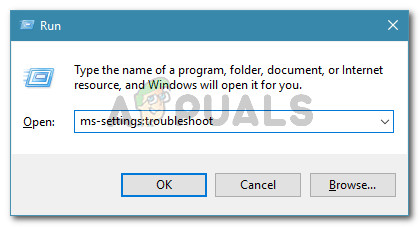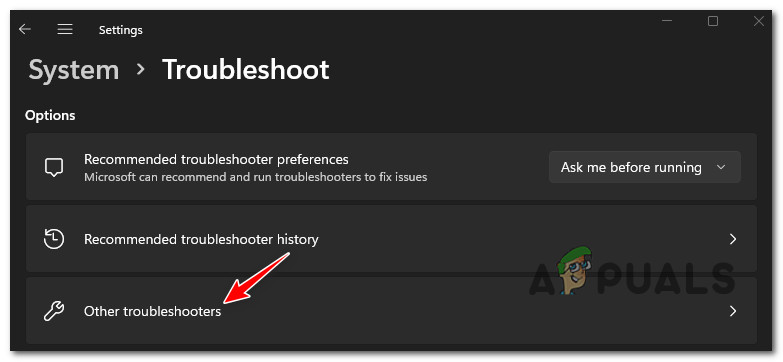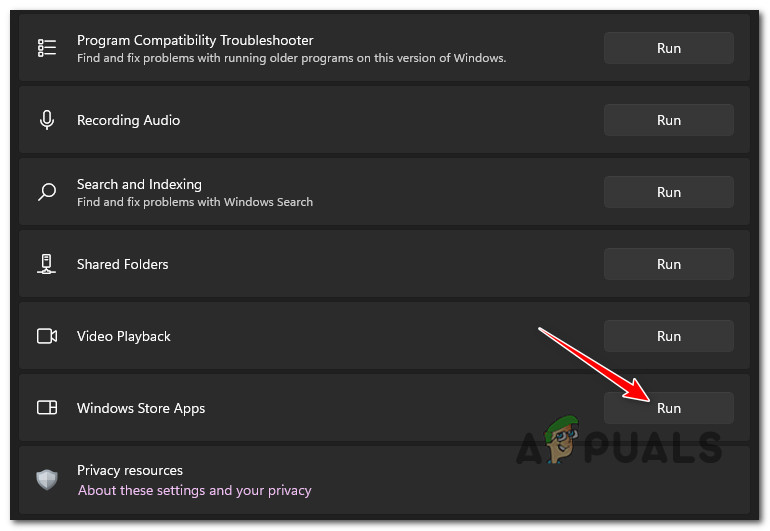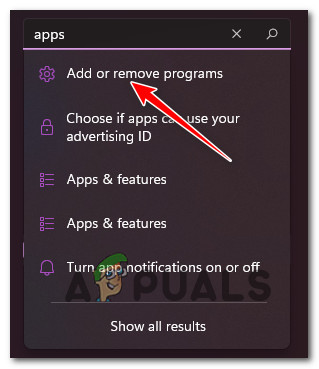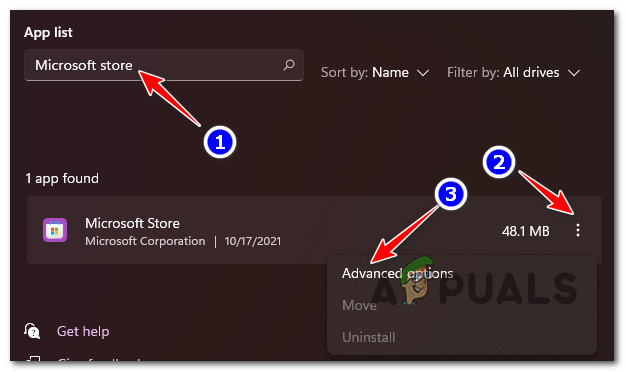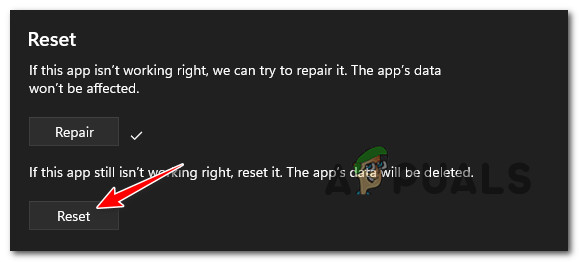We’ve investigated this issue thoroughly and analyzed various user reports and it turns out that several common scenarios might be triggering this Windows 11 error code. Here’s a list of possible culprits that might cause the 0x803F8001 error code: Now that you are familiar with every potential scenario that might cause this problem with the new Windows Store version on Windows 11, let’s go over the various methods that other affected users have successfully used to fix the issue:
Sign Out and back in again from Windows Store
As it turns out, one of the most common scenarios that will cause this particular issue is an account sync problem. There’s no official explanation on why this is occurring, but some affected users have discovered that in their case, the issue was produced by a Microsoft account glitch. So before trying anything else, our recommendation is to take the time and temporarily disconnect your Microsoft account from the Windows Store. You can do this by opening the new Microsoft Windows interface and clicking on your account icon on the top-right screen. Next, click on the Sign Out hyperlink from the context menu that just appeared. Once you have successfully signed out of your account, reboot your computer and wait for the next startup to complete. After your PC boots back up, open the Windows Store once again and click on the same account icon (top-right corner), but this time click on Sign in from the context menu. Next, provide the required credentials to sign in with the same account that you were previously using and see if the 0x803F8001 error is now fixed. In case you’re still dealing with the same kind of problem, move down to the next potential fix below.
Run the Windows Store Troubleshooter
Keep in mind that the suite of built-in troubleshooting utilities available on Windows 11 is much more efficient than they were on previous versions of Windows. If you’re dealing with a common glitch or inconsistency related to the Windows Store that Microsoft is already aware of, you can assume that the Windows Store Troubleshooter is capable of automatically resolving certain instances where this 0x803F8001 error code appears. Note: The Windows Store Troubleshooter contains a selection of automated repair strategies (most of them can be applied with one click) that the utility is capable of deploying if a recognizable malfunctioning scenario is found. If you haven’t tried to fix this issue by running the Windows Store Troubleshooter yet, follow the instructions below: In case you’re still encountering the 0x803F8001 error code, move down to the next potential fix below.
Repair or Reset the Windows Store app
As it turns out, this particular issue can also be related to some kind of corrupted temporary files or dependencies that the Windows Store has been accumulating. Remember that Windows 11 features a new version of the Windows Store app, so inconsistencies, glitches, and malfunctions are to be expected. Generally, if the root cause of the 0x803F8001 error is caused by temporary file data or a corrupted dependency, the way to fix both is to initially try and repair the entire suite before moving down to a reset procedure. If you’re looking for step by step instructions on enforcing both of these procedures, follow the guide below: In case the 0x803F8001 error is still occurring even after you tried repairing and resetting the Windows Store component, move down to the next method below for a different way of ensuring that the store component is not dealing with the system file corruption.
Reinstall the Windows Store via Windows Terminal
There are also situations where the corrupted file dependencies of the Windows Store will persist although you just tried resetting the utility. In this case, the best course of action is to reinstall the entire Windows Store component. However, keep in mind that you won’t be able to reinstall the component conventionally – Windows 11 won’t allow you to do this from the Programs and Features menu. You will have to do this from an elevated Windows Terminal app to make sure that you have the necessary permissions. Follow the instructions below to reinstall the entire Windows Store component using a command that will perform the re-installation via the Windows Terminal: In case the same 0x803F8001 error is still occurring, move down to the next potential fix below.
Run SFC and DISM scans
If you’ve come so far without a resolution, it’s almost certain that you’re dealing with some kind of system file corruption that is somehow affecting the functionality of the Windows Store. Given the interconnected nature of the Store component on Windows 11, there are a lot of dependencies that might be indirectly causing the 0x803F8001 error. With this in mind, you should also take the time to run a couple of built-in utilities capable of scanning for corrupted system files and replacing them with healthy equivalents – SFC (System File Checker) and DISM (Deployment Image Servicing and Management). Our recommendation is to start with an SFC scan performed from an elevated CMD prompt. Once the SFC operation is complete, reboot your PC and wait for the next startup is complete. Note: This operation will scan your system for corrupted files and replace any corrupted file or dependency with a healthy equivalent using a locally stored cache. After your PC boots back up, you should follow up with a DISM scan (even if you don’t see the error occurring again). Note: Keep in mind that before you launch a DISM scan, you’ll need to ensure that you have a stable connection to the internet. This is required because DISM is using a sub-component of Windows Update to download healthy files to replace the corrupted ones. Once you’ve performed both types of scans, replicate the scenario that was previously causing the 0x803F8001 error and see if the problem is now fixed. If the same problem is still occurring, move down to the final method below.
Perform a Repair install
If none of the methods features so far in this article have proven to be effective in your case, one last thing you can try before going for a clean install (and possibly think about moving away from an insider build), is to perform a repair install procedure. This operation will allow you to reinstall every component of your current Windows 11 installation without losing any personal data that you might be currently storing on the OS drive. If you want to give it a go, follow these instructions to perform a repair install (in-place repair) on Windows 11.
Fix: Windows 10 Store Error Code 0x803F8001How to Fix Minecraft Error 0x803f8001 on Windows?How to Fix Error Code 0x803f8001 on Xbox OneFix: Sticky Notes Error Code 0x803f8001



